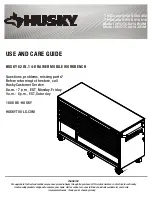
K6610170
Rev.2
Dec 22, 2004
- 50 -
7.3. Command Protocol
7.3.1. PIO Data In Command
Execution includes the transfer of one or more 512 byte sectors of data from the device to the host.
1) The host writes any required parameters to the Features, Sector Count, LBA Low (Sector Number),
LBA Mid (Cylinder Low), LBA High (Cylinder High), and Device/Head registers.
2) The host writes the command code to the Command Register.
3) The device sets BSY and prepares for data transfer.
4) When a sector(block) of data is available, the device sets DRQ and clears BSY prior to asserting
INTRQ.
5) After detecting INTRQ, the host reads the Status Register, then reads one sector (block) of data via the
Data Register. In response to the Status Register being read, the device negates INTRQ.
6) The device clears DRQ. If transfer of another sector (block) is required, the device also sets BSY and
the above sequence is repeated from 4).
7.3.2. PIO Data Out Command
Execution includes the transfer of one or more 512-byte sectors of data from the host to the device.
1) The host writes any required parameters to the Features, Sector Count, LBA Low (Sector
Number), LBA Mid (Cylinder Low), LBA High (Cylinder High), and Device/Head Registers.
2) The host writes the command code to the Command Register.
3) The device sets the DRQ when it gets ready to accept the first sector(block) of data.
4) The host writes one sector block of data to the Data Register.
5) The device clears DRQ and sets BSY.
6) When the device has processed the sector(block), it clears BSY and set the INTRQ signal to "ON".
The device sets DRQ again if another sector is required to transfer.
7) After detecting INTRQ, the host reads the Status Register.
8) The device clears the interrupt.
9) If another sector (block) is required to be transferred, the above steps 3) to 8) are repeated.
















































